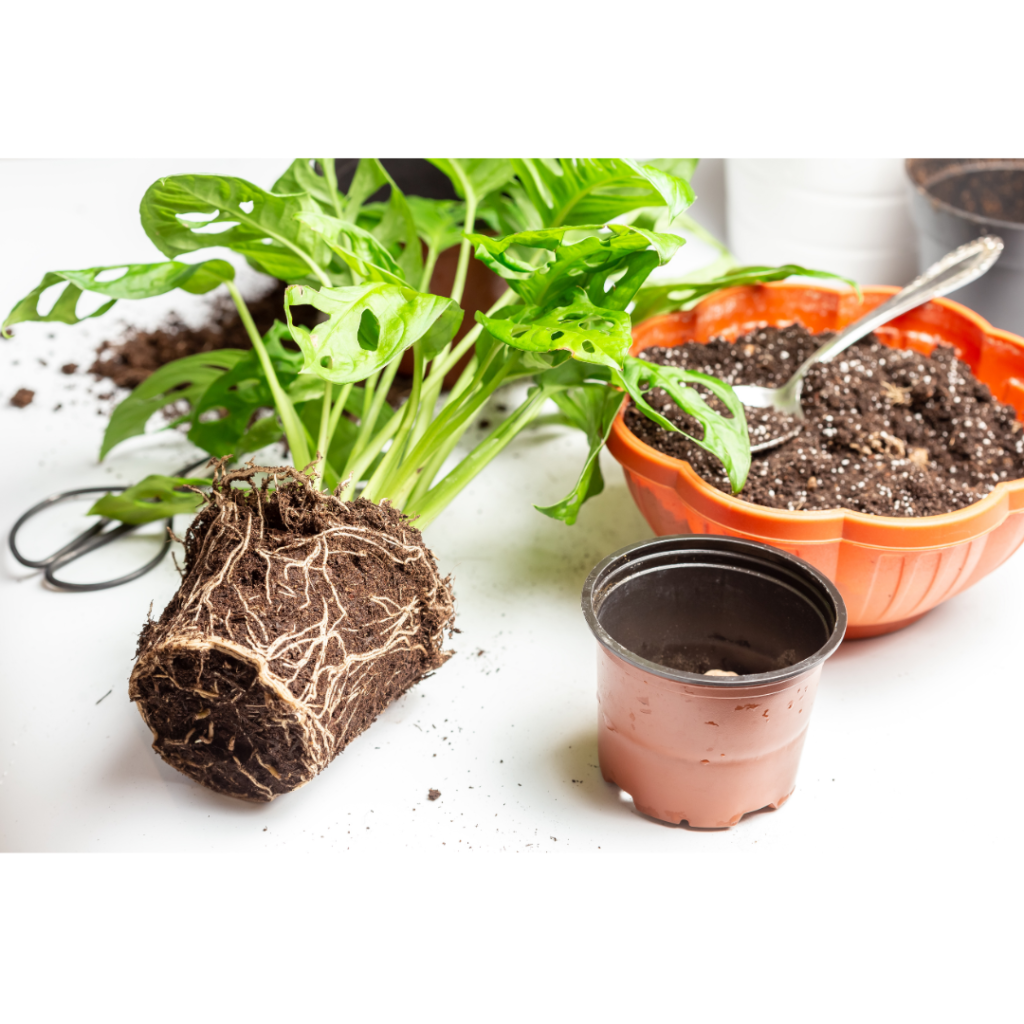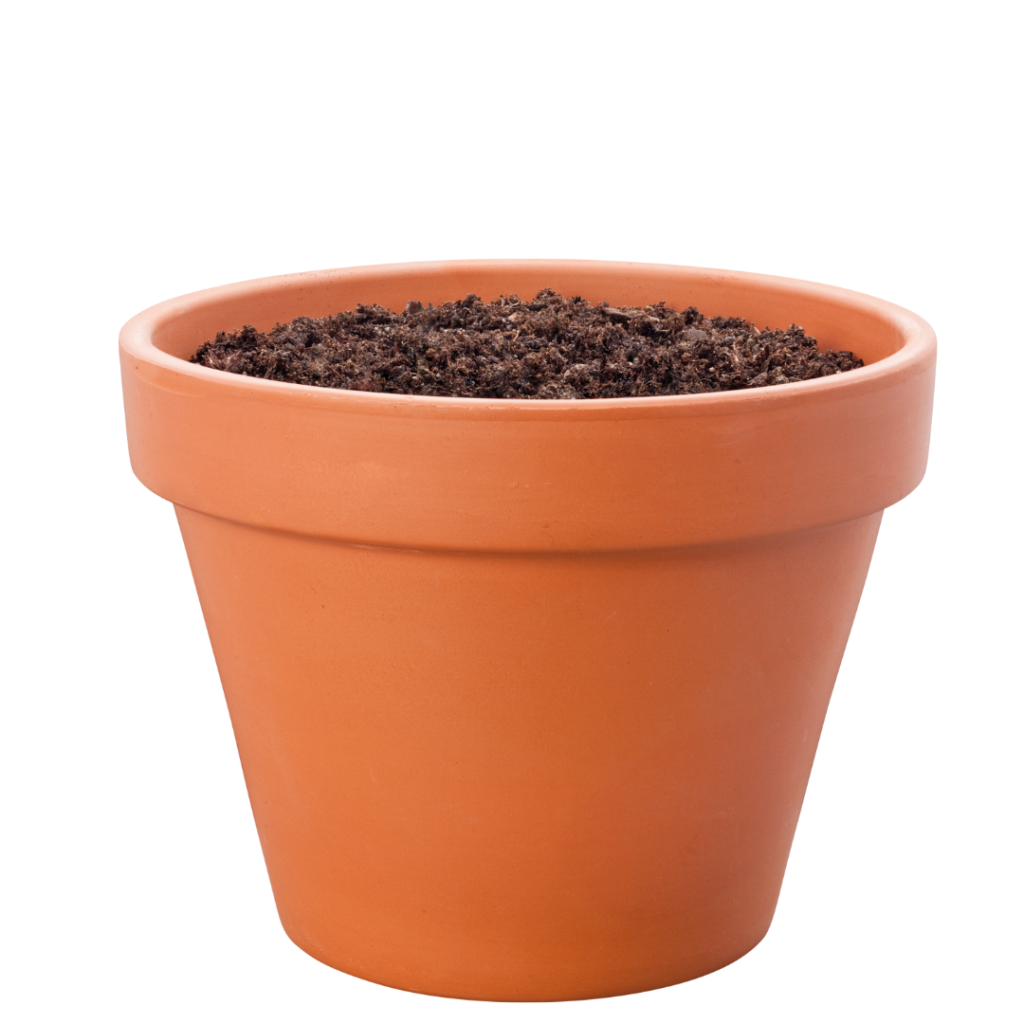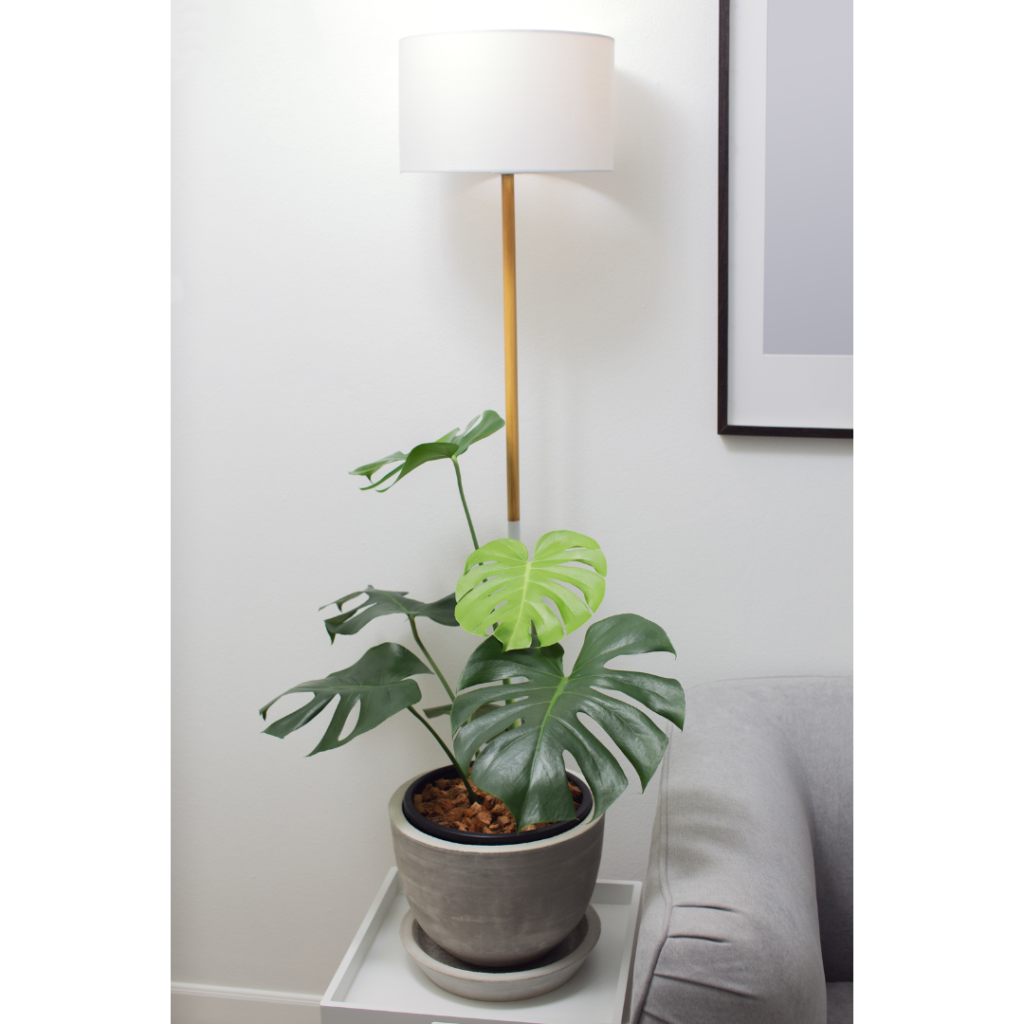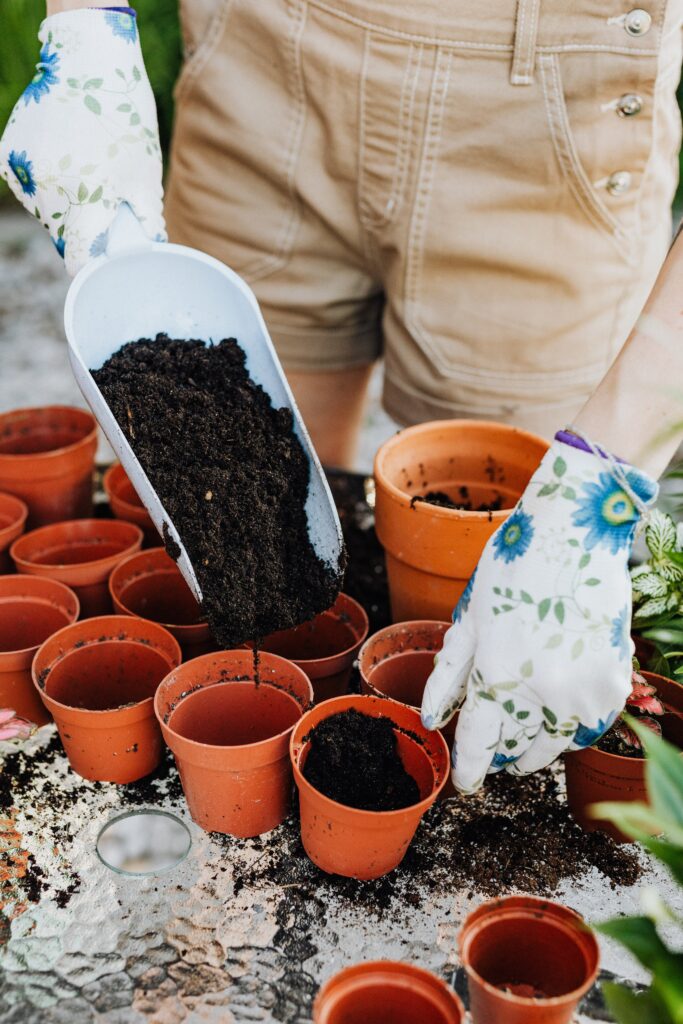We all have that one plant, the one we can’t help but obsess over. The Monstera is that plant for me(Monstera Madness is it). I’ve had mine for about a year now, and it’s grown from a tiny little sprout to a towering tropical vine that reaches up my bookcase and then some.
But what pot type do you need for your Monstera? There are so many options out there! It can be hard to know where to start.

You’re probably wondering what the best pot size for Monstera is, and whether you should go for a small or large one. Well, we’ve got you covered!
In this guide, we’ll discuss the what’s the best or right pot size for Monstera plants and what factors to consider when choosing their containers. Let’s dive right in!
It’s time to learn more about the different types of pots for Monsteras and how each one works best for your plant AND your space!
Monstera plants are popular for their large, heart-shaped leaves and their ability to thrive in low-light conditions. They’re also known for having a lovely, tropical appearance that’s easy on the eyes.
There are many varieties of monstera plants like Monstera deliciosa, Monstera Albo, Monstera Siltepecana, and Monstera adansonii. (You can read here the Monstera Varieties)
Regardless of which one you choose, you’ll get a beautiful addition to your home or office.
When you’re looking for a new Monstera pot, you want to make sure you’ve got the right one.
There are some requirements or considerations when choosing the right pot for your monstera.
Size of the pot
The size of your Monstera will depend on where you’re planning to put it. If you have Monstera Adansonii you can’t put them in a large pot because they’re vines they are perfect for hanging planters. So, make sure that your pot for Monstera is right for their size.
If you’re going to put it indoors, then a small pot is fine. But if you put it outdoors, then a larger pot is better.

The size of the pot also matters because it will determine how much water your plant needs. A larger pot means more space for water retention and therefore less frequent watering is needed.
Weight of the pot
The weight of the pot matters because Monstera plants are heavy and can cause damage to floors and walls if they aren’t held up by something sturdy enough to support their weight. So when choosing a pot for your Monstera plant, make sure it’s heavy enough that it won’t fall over when weighed down by soil or water from rainfall or irrigation systems.
Pot Construction
Finally, consider the construction of your pot how sturdy is it? Is it made from plastic, clay, or metal? Metal pots tend to be sturdier than plastic ones, but they may rust over time.
You MUST definitely check these three requirements for your Monstera Pot
Different types of Pots.
There are many different types of pots to choose from. The best pot for you depends on your needs and the plants that you want to grow.
Pots come in a range of materials, including plastic, unglazed terracotta, glazed ceramic or glazed clay. Each material has its own benefits and drawbacks.
Some pots have saucers attached so that excess water can be collected and reused to water other plants. These self-watering pots may be a great choice if you don’t have time to water your plants daily or don’t want to carry heavy buckets full of water back and forth from the garden hose.
Here’s a quick run-down on some of the different types of pots you’ll find and how they differ from one another:
Plastic Pots
When it comes to potted plants, there’s a lot of variety. But you don’t need to spend hours researching which ones are best for your plants we’ve done the work for you!

Any type of plastic pot is best when your plant is small. As your plant grows and gets taller and supports like bamboo stakes or moss posts are needed, it’s much better to use a heavier pot so the plant is not easily knocked over.[
When your plant is small, you can always grow it in a nursery pot and slip it inside a more decorative cache pot.
UNGLAZED TERRA COTTA
You’ve probably heard of terra cotta, but are you sure you know all the pros and cons?
Terra cotta pots can be both a blessing and a curse. If you tend to “overwater“, terra cotta can be a wonderful type of pot. Because of the porous nature of unglazed terra cotta, the potting mix will dry out much more quickly.

Some cons to using terra cotta are that it can dry out too quickly sometimes (depending on your watering habits, the type of potting mix, and growing conditions), especially in smaller terra cotta pots. The pots can also incur some maintenance as minerals in tap water and fertilizer salts build up on the pot itself. Some people love the patina it produces, while others don’t!
GLAZED CERAMIC OR GLAZED CLAY
When it comes to planting a Monstera deliciosa, you have a lot of options. But what are the benefits of using glazed ceramic pots?
If you’re looking for something durable and sturdy, glazed ceramic pots are your best bet. They’ll hold up well under the weight of the plant as it grows. My own Monstera deliciosa plant is growing in a large glazed ceramic pot. Because of its weight, it is very stable, even as the plant gets taller and taller on the bamboo teepee I made, and there is no risk of knocking it over.
I recommend that any large ceramic pot like this be placed on a caster with wheels so that you can easily move your plant. Otherwise, the weight will make it prohibitive to move.

Another benefit to using glazed ceramic pots versus terra cotta pots is that glazed ceramic pots will retain more moisture. At some point (you have to stop somewhere!) once you reach a certain size as your plant gets more and more root-bound, glazed ceramic pots will retain more moisture than terra cotta pots and this will be a good thing because otherwise, you’ll need to water way too frequently!
And That’s all we hope you learn about this and you get the right answers to your questions.
If you have any suggestions you can leave us a comment.
Thank you for reading!
